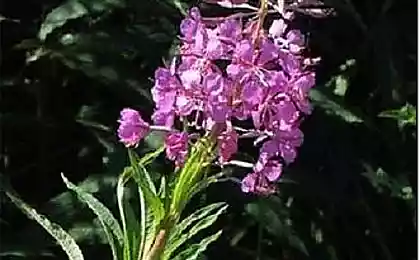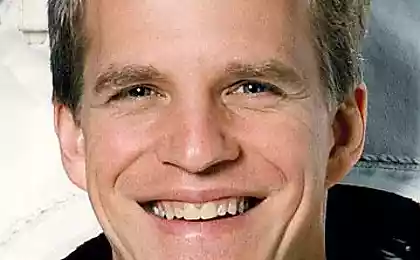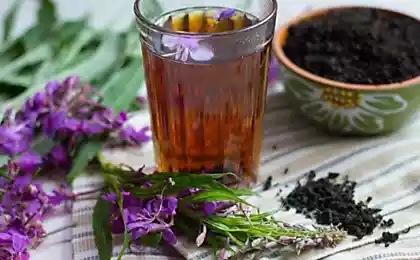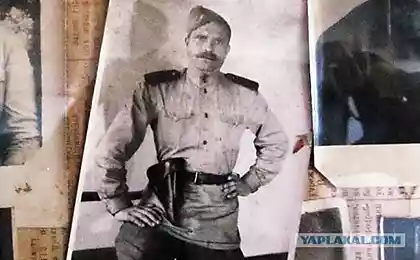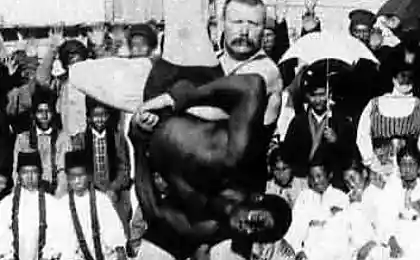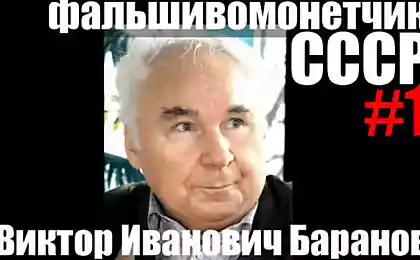929
Mucha, Ivan, Albert II and 10 more animals, have been in space
List of our smaller brethren pioneering exploration of space glubin
Experimental study of space - one of the most labor-intensive processes in the history of mankind. Many of the pioneers risked their lives for the next page in the annals of "space achievements." It so happened that among the heroes whose names are inscribed in the history of the study of near-Earth space in golden letters were not only people but also animals, as opposed to the "astronauts reasonable" does not become an instrument voluntarily meet the space ambitions of human civilization. Some of the animals, which you read here, after the fateful flight back to Earth, while others are less fortunate - they became posthumous fame.
1. Fruit mushki
The earliest living creatures that have left our planet has become a common fruit fly Drosophila. February 20, 1947, the year the United States launched a missile "V-2" with tiny astronauts on board to study the effects of solar radiation on living organisms. The experiment went well: reaching a height of 109 km, the fruit fly back to Earth unharmed.
2. Albert II
After more than two years after the success of fruit flies June 14, 1949, on "V-2" went into space Albert II - a small rhesus monkeys. The rocket rose to a height of about 134 km away, but with a decrease in Alberta was not lucky - a problem with the parachute, causing macaques became one of the first victims of space exploration.
3. Albert V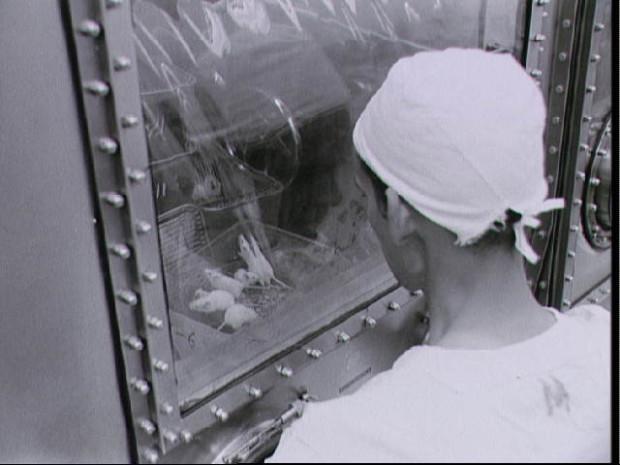
Another worker near-Earth space by the name of Albert, but the monkey and mouse, died August 31, 1950, the year as a result of a failed landing after a flight to the "V-2" The cause of the disaster again served as a parachute failure.
4. dezik and Tsygan
Two dogs were destined to be the first dogs were in space. Flight dezik and Roma, held on July 22, 1951, the year continued, in general, about 20 minutes, after which the dog safely back to their home planet. One of the dogs, Gypsy, was landing a minor injury, ragged belly, but other animals feel great.
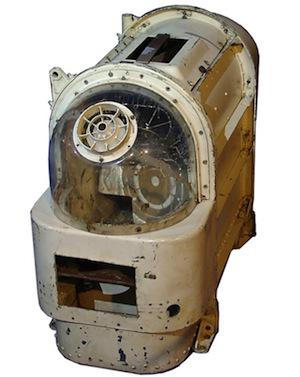
Stay at an altitude of 87, 7 km prohibitive overload state of weightlessness have not affected the physiological indices of animals, and after landing Sergei Korolev personally drove four-legged space explorers to the point of dislocation.
Unfortunately, dezik died a week after this start - due to the failure of the parachute system he and his partner, a dog named Fox, died from hitting the ground.
After this incident, Gypsy decided not to allow for flight, so after the fateful flight male lived for more than ten years, and distinguished, according to contemporaries, extremely nasty and quarrelsome character.
5. Layka
November 3, 1957, the year was an important, but also one of the most tragic stages in space exploration. At half past five in the morning Moscow time, a dog named Laika went into orbit the Earth in a spacecraft, "Sputnik-2." Laika the first time in history reached orbit and managed to make four turns around the Earth, but died due to overheating caused by miscalculations in the construction of the satellite and the absence of a system of thermoregulation within 5-7 hours after the start, although initially it was assumed that it will hold a week in space.

The experiment caused a living, but mostly negative reaction of the world community. «The New York Times» wrote about the Dog: "The most shaggy, the lonely, the poor dog in the world" (the number of November 5, 1957,). The Soviet Union for a long time concealed the death of a dog, the whole week by publishing data on the "state of health" Laiki dead, then it, according to the official version, "put to sleep».
Death Huskies proved: stay in orbit is harmless to living organisms, which marked the beginning of a new stage of development of near-Earth space - orbital spaceflight.
6. Gordo, Able and Miss Miss Beyker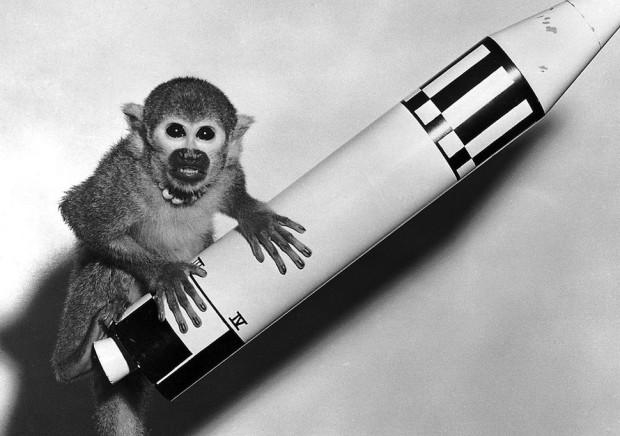
The response of the United States to become a flight Laiki launches "Jupiter-AM" with the monkeys on board. The first American animal reached Earth's orbit became Sajmir (genus Cebidae) Gordo: December 14, 1958 the monkey climbed to a height of about 500 kilometers, to withstand the overload in the 10G during takeoff and 40G at lower, but the capsule is the primacy after 15 minutes in orbit fell into the ocean.
Five months later, after traveling Gordo May 28, 1959, went into orbit rhesus monkeys named Able and Miss squirrel Sajmir Miss Baker, who spent 9 minutes in weightlessness before returning to Earth unharmed. Miss Abel died three days later when you remove one of the electrodes - probably the researchers did not calculate the dose of anesthetic drug, introduced ape, but her workmate lived until 1984, the year she died of old age at the age of 27-years.
7. Protein and Strelka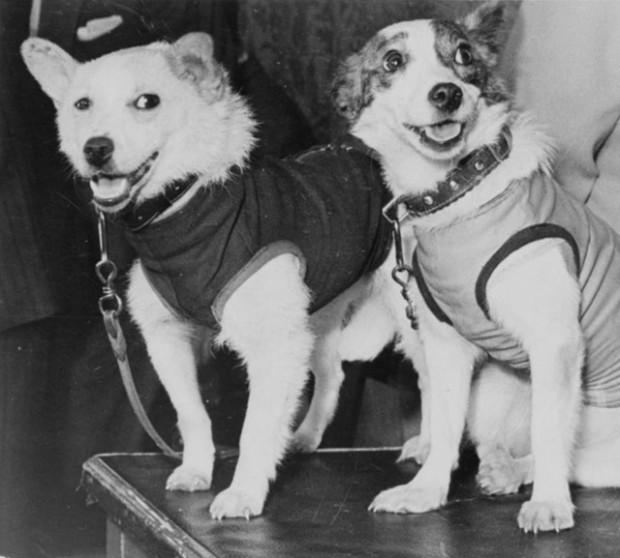
Perhaps the most famous of the animals which conquer space, Belka and Strelka, not only left its mark in the history of spaceflight, but also became a phenomenon of mass culture - Soviet cosmonauts dog devoted a lot of literary, musical and cinematographic works.
Belka and Strelka went on a fateful journey from the Baikonur Cosmodrome August 19, 1960, the year of their flight on the unit "Sputnik-5" lasted more than 25 hours, during which time the dogs and their companions - 40 laboratory mice, two rats, some species insect, plant, fungal cultures, microbes and also seeds of wheat, peas, onions and other bio-objects - made 17 full revolutions around the Earth, breaking the 700 thousand kilometers.

By the way, the first animals returning from orbit, it could be the other dogs: main crew in the experiment were mongrel mutts Seagull and Chanterelle, who died in the failed July 28, 1960 start of the year. After that, it was decided to use stand-ins, which eventually got all the credit, but only to participate in the experiment were selected 12 dogs.
After returning to Earth Belka and Strelka lived for many years, and even brought the arrow and the offspring of one of the puppies, a female named Fluff, Nikita Khrushchev gave Jacqueline Kennedy (Jacqueline Kennedy), the wife of US President John F. Kennedy.
8. Chimpanzee Hem
Four-Ham became the first great apes, who returned to Earth orbit. His flight on board the spaceship "Mercury-Redstone 2" held on 31 January 1961 year. The capsule with the chimpanzee was launched from the spaceport at Cape Canaveral, and during the flight duration of 16 minutes and 39 seconds Ham had to cope with the "abnormal situation" - the primacy should have at least five seconds after the flash of blue pull a certain lever, and Monkey coped with the task brilliantly.

Thus, researchers have found that orbit the animal retains the capacity to adequately respond to stimuli. After splashdown in the Atlantic Ocean capsule with chimpanzees found and taken aboard a rescue vessel. Ham died on January 19, 1983, the year at the age of 26 years.
9. Nigella, guinea pigs and Ivan Ivanovich
March 9, 1961, the year the launch of the spacecraft, designed to send a man into space, "Sputnik-9" was the prototype of the famous "Vostok", thanks to which our countryman was the first people looked to their home planet from orbit.
On board the "Sputnik-9" were dog Nigella, some guinea pigs, frogs, mice, and the dummy, nicknamed Ivan Ivanovich. After making one revolution around the Earth the unit began to decline, and travel safely delivered to Earth.
10. Cat Felisett
This cat had the honor to become the first member of the cat family, returning from orbit. Initially, the role of the first cosmonaut meow French scientists prepared cat Felix, however, just before the start of the cat ran away, so the researchers urgently began to look for a replacement. As a result, he was sent into space Felisett ordinary unprepared cat, who lived at the launch site, and is unlikely to imagine that will be the first and only "astrokoshkoy" (as it was nicknamed the newspaper) in history.
October 18, 1963, the year Felisett launched from the Baikonur Hammaguir located in the Sahara desert in Algeria. Rocket "Veronica-47" has reached a height of about 200 km, and then with the cat capsule separated from the booster module and began to decline - the entire flight lasted no more than a quarter of an hour. After landing near the launch site Felisett scientists extracted from the capsule, but to scrutinize her condition after being in near-Earth space failed: shortly after the momentous journey cat ran away, so that later the French rejected the idea of sending cats space.
11. Turtles, worms and kompaniya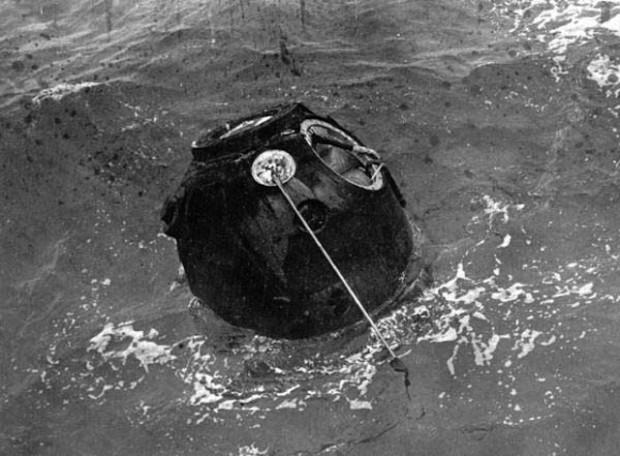
The first animal survivors of the flight around the moon, were two turtles, a few meal worms, flies and bacteria. September 15, 1968, the year the company went in flight on a spacecraft "Zond-5", circled Earth satellite and a week later returned home. Turtle thus lost approximately 10% of body weight, but generally no physiological abnormalities in animals was observed. Unfortunately, this achievement of Soviet cosmonautics quickly forgotten - just three months after the Americans were able to land on the moon that eclipsed a flight turtles and worms.
12. Frog-puteshestvennitsy
November 9, 1970, the year the spacecraft «The Orbital Frog Otolith» («OFO-A») were brought into orbit two frogs with which scientists have studied the mechanism of vestibular adaptation to the conditions of weightlessness.
13. Spiders and ryba
First spiders, and with them the first fish appeared in Earth orbit July 28, 1973, the year - to send the animals held in the framework of the mission "Skylab-3". Among other things, the first American orbital station "Skylab" the astronauts studied weaving webs in zero gravity, as well as the effect of stay in space on the nervous system of various animals.
via factroom.ru

Experimental study of space - one of the most labor-intensive processes in the history of mankind. Many of the pioneers risked their lives for the next page in the annals of "space achievements." It so happened that among the heroes whose names are inscribed in the history of the study of near-Earth space in golden letters were not only people but also animals, as opposed to the "astronauts reasonable" does not become an instrument voluntarily meet the space ambitions of human civilization. Some of the animals, which you read here, after the fateful flight back to Earth, while others are less fortunate - they became posthumous fame.
1. Fruit mushki

The earliest living creatures that have left our planet has become a common fruit fly Drosophila. February 20, 1947, the year the United States launched a missile "V-2" with tiny astronauts on board to study the effects of solar radiation on living organisms. The experiment went well: reaching a height of 109 km, the fruit fly back to Earth unharmed.
2. Albert II

After more than two years after the success of fruit flies June 14, 1949, on "V-2" went into space Albert II - a small rhesus monkeys. The rocket rose to a height of about 134 km away, but with a decrease in Alberta was not lucky - a problem with the parachute, causing macaques became one of the first victims of space exploration.
3. Albert V

Another worker near-Earth space by the name of Albert, but the monkey and mouse, died August 31, 1950, the year as a result of a failed landing after a flight to the "V-2" The cause of the disaster again served as a parachute failure.
4. dezik and Tsygan

Two dogs were destined to be the first dogs were in space. Flight dezik and Roma, held on July 22, 1951, the year continued, in general, about 20 minutes, after which the dog safely back to their home planet. One of the dogs, Gypsy, was landing a minor injury, ragged belly, but other animals feel great.

Stay at an altitude of 87, 7 km prohibitive overload state of weightlessness have not affected the physiological indices of animals, and after landing Sergei Korolev personally drove four-legged space explorers to the point of dislocation.
Unfortunately, dezik died a week after this start - due to the failure of the parachute system he and his partner, a dog named Fox, died from hitting the ground.
After this incident, Gypsy decided not to allow for flight, so after the fateful flight male lived for more than ten years, and distinguished, according to contemporaries, extremely nasty and quarrelsome character.
5. Layka

November 3, 1957, the year was an important, but also one of the most tragic stages in space exploration. At half past five in the morning Moscow time, a dog named Laika went into orbit the Earth in a spacecraft, "Sputnik-2." Laika the first time in history reached orbit and managed to make four turns around the Earth, but died due to overheating caused by miscalculations in the construction of the satellite and the absence of a system of thermoregulation within 5-7 hours after the start, although initially it was assumed that it will hold a week in space.

The experiment caused a living, but mostly negative reaction of the world community. «The New York Times» wrote about the Dog: "The most shaggy, the lonely, the poor dog in the world" (the number of November 5, 1957,). The Soviet Union for a long time concealed the death of a dog, the whole week by publishing data on the "state of health" Laiki dead, then it, according to the official version, "put to sleep».
Death Huskies proved: stay in orbit is harmless to living organisms, which marked the beginning of a new stage of development of near-Earth space - orbital spaceflight.
6. Gordo, Able and Miss Miss Beyker

The response of the United States to become a flight Laiki launches "Jupiter-AM" with the monkeys on board. The first American animal reached Earth's orbit became Sajmir (genus Cebidae) Gordo: December 14, 1958 the monkey climbed to a height of about 500 kilometers, to withstand the overload in the 10G during takeoff and 40G at lower, but the capsule is the primacy after 15 minutes in orbit fell into the ocean.
Five months later, after traveling Gordo May 28, 1959, went into orbit rhesus monkeys named Able and Miss squirrel Sajmir Miss Baker, who spent 9 minutes in weightlessness before returning to Earth unharmed. Miss Abel died three days later when you remove one of the electrodes - probably the researchers did not calculate the dose of anesthetic drug, introduced ape, but her workmate lived until 1984, the year she died of old age at the age of 27-years.
7. Protein and Strelka

Perhaps the most famous of the animals which conquer space, Belka and Strelka, not only left its mark in the history of spaceflight, but also became a phenomenon of mass culture - Soviet cosmonauts dog devoted a lot of literary, musical and cinematographic works.
Belka and Strelka went on a fateful journey from the Baikonur Cosmodrome August 19, 1960, the year of their flight on the unit "Sputnik-5" lasted more than 25 hours, during which time the dogs and their companions - 40 laboratory mice, two rats, some species insect, plant, fungal cultures, microbes and also seeds of wheat, peas, onions and other bio-objects - made 17 full revolutions around the Earth, breaking the 700 thousand kilometers.

By the way, the first animals returning from orbit, it could be the other dogs: main crew in the experiment were mongrel mutts Seagull and Chanterelle, who died in the failed July 28, 1960 start of the year. After that, it was decided to use stand-ins, which eventually got all the credit, but only to participate in the experiment were selected 12 dogs.
After returning to Earth Belka and Strelka lived for many years, and even brought the arrow and the offspring of one of the puppies, a female named Fluff, Nikita Khrushchev gave Jacqueline Kennedy (Jacqueline Kennedy), the wife of US President John F. Kennedy.
8. Chimpanzee Hem

Four-Ham became the first great apes, who returned to Earth orbit. His flight on board the spaceship "Mercury-Redstone 2" held on 31 January 1961 year. The capsule with the chimpanzee was launched from the spaceport at Cape Canaveral, and during the flight duration of 16 minutes and 39 seconds Ham had to cope with the "abnormal situation" - the primacy should have at least five seconds after the flash of blue pull a certain lever, and Monkey coped with the task brilliantly.

Thus, researchers have found that orbit the animal retains the capacity to adequately respond to stimuli. After splashdown in the Atlantic Ocean capsule with chimpanzees found and taken aboard a rescue vessel. Ham died on January 19, 1983, the year at the age of 26 years.
9. Nigella, guinea pigs and Ivan Ivanovich

March 9, 1961, the year the launch of the spacecraft, designed to send a man into space, "Sputnik-9" was the prototype of the famous "Vostok", thanks to which our countryman was the first people looked to their home planet from orbit.
On board the "Sputnik-9" were dog Nigella, some guinea pigs, frogs, mice, and the dummy, nicknamed Ivan Ivanovich. After making one revolution around the Earth the unit began to decline, and travel safely delivered to Earth.
10. Cat Felisett

This cat had the honor to become the first member of the cat family, returning from orbit. Initially, the role of the first cosmonaut meow French scientists prepared cat Felix, however, just before the start of the cat ran away, so the researchers urgently began to look for a replacement. As a result, he was sent into space Felisett ordinary unprepared cat, who lived at the launch site, and is unlikely to imagine that will be the first and only "astrokoshkoy" (as it was nicknamed the newspaper) in history.
October 18, 1963, the year Felisett launched from the Baikonur Hammaguir located in the Sahara desert in Algeria. Rocket "Veronica-47" has reached a height of about 200 km, and then with the cat capsule separated from the booster module and began to decline - the entire flight lasted no more than a quarter of an hour. After landing near the launch site Felisett scientists extracted from the capsule, but to scrutinize her condition after being in near-Earth space failed: shortly after the momentous journey cat ran away, so that later the French rejected the idea of sending cats space.
11. Turtles, worms and kompaniya

The first animal survivors of the flight around the moon, were two turtles, a few meal worms, flies and bacteria. September 15, 1968, the year the company went in flight on a spacecraft "Zond-5", circled Earth satellite and a week later returned home. Turtle thus lost approximately 10% of body weight, but generally no physiological abnormalities in animals was observed. Unfortunately, this achievement of Soviet cosmonautics quickly forgotten - just three months after the Americans were able to land on the moon that eclipsed a flight turtles and worms.
12. Frog-puteshestvennitsy

November 9, 1970, the year the spacecraft «The Orbital Frog Otolith» («OFO-A») were brought into orbit two frogs with which scientists have studied the mechanism of vestibular adaptation to the conditions of weightlessness.
13. Spiders and ryba

First spiders, and with them the first fish appeared in Earth orbit July 28, 1973, the year - to send the animals held in the framework of the mission "Skylab-3". Among other things, the first American orbital station "Skylab" the astronauts studied weaving webs in zero gravity, as well as the effect of stay in space on the nervous system of various animals.
via factroom.ru
On Mars, there is water - about a liter for every 0, 02 m3
These arthropod more like hallucinations than animals

